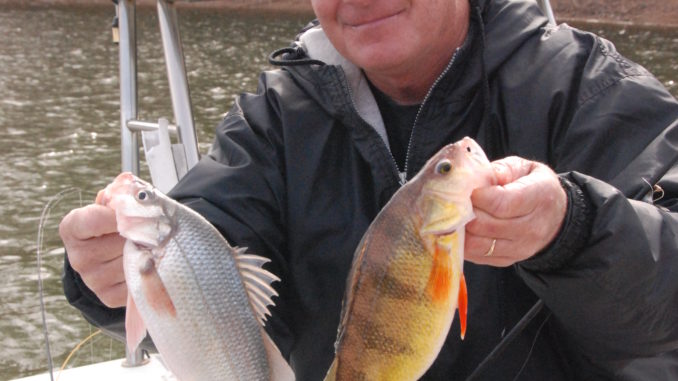
Though yellow perch and white perch are likely to be found in the same locations on Lake Russell, as well as sharing the same last name, the similarity between the two species ends there.
Yellow perch are members of the percidae or perch family, more closely related to the walleye than any of the sunfish or white bass species found in South Carolina.
Yellow perch size can vary greatly between bodies of water, but adults are usually four to 10 inches long. They can live up to 11 years, and older perch are often much larger than average. The maximum recorded length is 21 inches, and the largest recorded weight is 4.3 pound.
Large yellow perch are often called “jumbo perch” or “jack perch”.
White perch do not belong to the perch family but are a morone species; its closest next of kin is the striped bass. Like striped bass, white perch are anadromous, meaning they can live in both fresh and salt water.
White perch are generally silvery-white in color, hence the name, depending upon habitat, and larger specimens begin to develop a darker shade near the dorsal fin and along the top of the fish.
White perch are a prolific species and are known to eat the eggs of other species native to the area. The fish has had much assistance by ill-informed but well-meaning anglers who have illegally transplanted them into nearly every body of freshwater in the state. In fact, the distribution is so wide spread that in June 2008, white perch were removed from the game fish list by the S.C. Department of Natural Resources, which abolished any creel limits and opened the way for commercial harvest of the species.


Be the first to comment